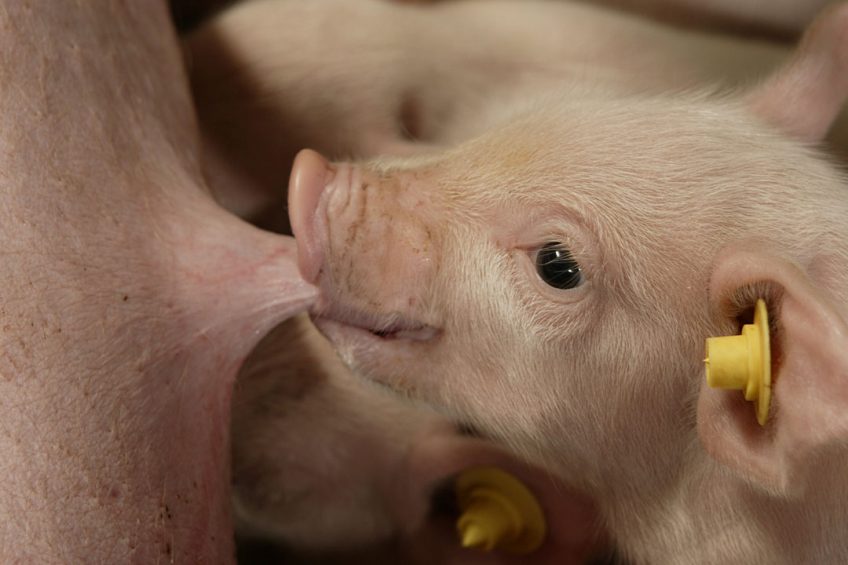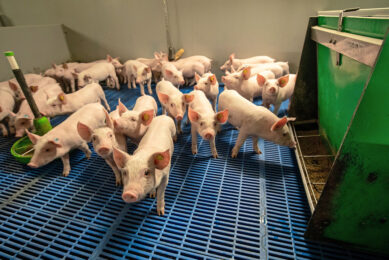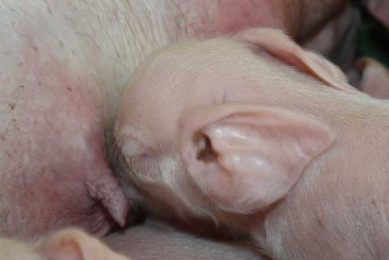Energy boost for sows and piglets

Lysolecithins are known to maximise fat digestion and enhance nutrient absorption. A recent trial revealed that sows were better able to maintain their body condition when fed an energy booster including lysolecithins. As a result, the number of stillborn piglets was reduced, and sows showed better fertility.
Large numbers of high-quality piglets produced in a sustainable way – that is the most important goal of modern pig farms. In practice, however, sow farmers face various challenges, like severe body condition loss during lactation with all its consequences. The negative energy balance, which often already occurs before parturition, has a negative effect on the number of stillborn piglets and litter growth. In addition, a negative energy balance suppresses follicle development and reduces levels of important reproductive hormones, resulting in a prolonged weaning-to-oestrus interval, lower ovulation rates and higher embryonic mortality. Consequently, the uniformity and quality of the next litter will be impaired.
Improving daily nutrient intake
To prevent body condition loss and muscle breakdown, modern sows require more nutrients to fuel the increase in productivity. There are two ways to improve daily nutrient intake: either by simply increasing feed intake or by increasing the nutrient density of the diet. As the sow’s feed intake capacity often does not fulfil the high nutrient requirement for milk production, increasing nutrient density could help to reduce the gap between requirement and nutrient intake.
To maximise the nutrient availability and usage of high-density diets, lysolecithins could be added to improve fat digestion and nutrient absorption, thereby acting like an energy booster. To demonstrate the beneficial effect of lysolecithins on sow performance and piglet growth during lactation, a trial was carried out at Livestock Feed Tests Denmark, a commercial farm with research facilities in Germany and Denmark. When entering the farrowing crate at about seven days before farrowing, sows (Danbred x Pietrain) received a standard lactation feed, which contained 2.5% soybean oil and a crude fat content of 5.4%. In the treatment group 1,000 grammes of FRA LeciMax Dry per tonne of feed, hereafter “lysolecithins”, was added to the lactation feed. Piglets were weaned at approximately 26 days.
Maintaining body condition
Results show that lysolecithins were indeed able to enhance fat digestion and nutrient absorption as body condition loss was reduced (see Table 1). From the start of the trial until weaning, sows fed lysolecithins lost 34.5 kilogrammes of body weight compared to 41.4kg in the control group. That improvement was even more pronounced looking at the body condition score: 15.2% lower body condition score at weaning in the lysolecithin group compared to 27.2% in the control group. Moreover, sows receiving lysolecithins could more easily consume all the feed supplied; only one sow in the treatment group did not consume all the feed according to the feed curve, whereas in the control group four sows did not consume all the feed.
The lower reduction in body condition in the lysolecithin group also resulted in improved fertility, which was concluded from the reduction of the number of open days (weaning-to-oestrus interval): 5.2 days compared to 5.7 days in the control group. Furthermore, the percentage of sows having fewer than five open days increased 15.4% compared to the control group.
Higher milk quality and piglet growth
As shown in Table 2, both colostrum and milk collected from lysolecithin-fed sows contained a higher dry matter content and a significantly higher protein level. Fat levels were lower, but no differences were observed in the lactose or ash concentration. It can be suggested that this higher colostrum and milk quality contributed to the better piglet growth observed in the treatment group.
The number of stillborn piglets was reduced substantially by almost 1 piglet from 2.5 to 1.6 piglets in the lysolecithins group (Table 3), which was probably due to the better energy supply around farrowing. Suckling piglets in the lysolecithins group showed a higher average daily weight gain compared to the control group. Despite the lower starting weight in the treatment group (after compensation to 13 piglets per sow), the body weight at weaning was higher. Moreover, piglet mortality was substantially lower in the lysolecithin-fed sows: 0.6 piglets compared to 1.0 in the control group. As a result, these sows weaned more piglets. The combination of higher weight gain, higher weaning weight and more weaned piglets per sow resulted in an increased litter weight.
Concluding remarks
Sows fed the energy booster with lysolecithins in their lactation diet lost less backfat during confinement and had a lower reduction in body condition score, which resulted in a lower number of stillbirths and a reduction of the weaning-to-oestrus interval. In addition, colostrum and milk quality were better, resulting in a higher number and heavier weaned piglets. With a calculated return on investment of 21.7, it is not only beneficial for sow and piglet performance, but also very interesting from an economical point of view.
By Olga Dansen, MSc, head R&D, FRAmelco
 Beheer
Beheer



 WP Admin
WP Admin  Bewerk bericht
Bewerk bericht